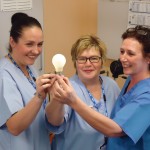 Change is undoubtedly one of the hardest things for any organization to achieve, so it’s perhaps not surprising that there is such an emphasis on this in the modern, complex and rapidly changing world.
Change is undoubtedly one of the hardest things for any organization to achieve, so it’s perhaps not surprising that there is such an emphasis on this in the modern, complex and rapidly changing world.
The National Health Service have recently teamed up with the Health Service Journal and Nursing Times to put together a guide on change.
The guide was a crowdsourced affair, taking in some 13,000 contributions over a three month period. The end product is broken down into three sections:
- Barriers to change
- Building blocks
- Solutions
Barriers to change
When it came to some of the key (perceived) barriers to change among NHS staff, they included things like an aversion to taking risks and a leadership that is largely stuck in command and control methods.
Building blocks
The next phase saw participants asked for some of the systemic changes that could help to support a more ‘bottom up’ change culture within the NHS. These building blocks include empowering staff to speak up, providing an open and transparent environment, and providing a level of thought diversity.
Whilst there is a slight mention (under long-term thinking) about giving employees time to think about change, this is arguably the biggest hurdle to overcome.
Whether it’s time to learn new things, or time to think about change and improvement, there is a strong culture of nose to the grindstone in healthcare that seldom affords employees time to think, learn and reflect.
Solutions
It’s this last point that makes the solutions part of the equation a significant challenge. I agree with much of what is there, and there is an awful lot to digest, and the challenge now is to encourage people to consume it and integrate it into their working lives.
It’s a challenge that project lead Helen Bevan talks about in an article for the HSJ. She notes how the process of the challenge provoked participants to provide positive contributions towards change, which marks a change from critiquing from the sidelines, as is so easy to do.
She highlights however that they are very much the first steps, and the challenge now is to turn the energy and insights generated by the process into actions.
You can check out the Change Toolkit and access all of the barriers/building blocks/solutions here.
Is this really that good? I mean there are 1.3 million people in the NHS, so even assuming all of the participants were from the NHS (which seems unlikely given the 45 countries they apparently came from), that represents 0.2% of the workforce.
Seems a bit underwhelming. With the number of participants, it kinda suggests that most people who gave their suggestions were those with a strong interest in change management, so isn't this just another kind of top down in reality? If it was truly bottom up then a lot more people would have contributed.
To be fair though, the alternative is that they didn't ask anyone at all. That isn't any better, is it?
I think the problem with this is that there are so many things to take on board with the outcome that, regardless of the good intentions, it will likely be ignored because people simply don't have the time or energy to take it in.
I'm not entirely sure that softer topics such as this really work for crowdsourcing. Employing the crowd is often effective when you can benefit from the transfer of 'wasted time' to the crowd. In other words, with the creative process containing a lot of failure, crowdsourcing is great because you don't pay for that failure.
With this though, you would, because the crowd have only generated ideas. If those ideas don't work then you're no better off than before. In softer fields, such as management, I think you're often better simply having a culture whereby low-cost experimentation is promoted so that people can experiment without failure costing too much.
I would be interested to know more about how the sample was selected. I've looked at http://clevertogether.com/public/healthcare/chang… and can't really ascertain much besides their geographic whereabouts. Seems odd that they should talk about methodology but say very little about how these people were chosen.
Given the similarities in the general reader demographic, I suspect the crowd in this instance was largely pooled from the existing audience of the School for Health & Social Care Radicals and the like, although, as you say, it isn't particularly clear.
Good project, I like it.
I wonder if any of the politicians had a say? They always seem to have an oversized influence on the NHS.
I can't help but think this is out of touch with the reality of life working in the NHS in a huge way. And I say that with a heavy heart.